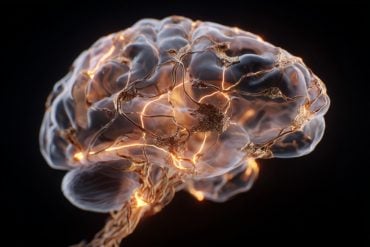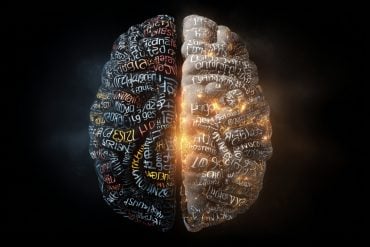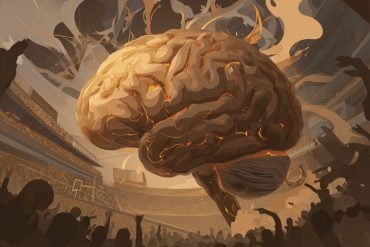Summary: Researchers reveal how specific brain neurons impact ovarian function and hormone release, essential for reproduction. Kisspeptin neurons and dynorphin receptors play a crucial role in regulating fertility. Dynorphin receptors in kisspeptin neurons maintain hormone secretion and ovulation. Understanding these mechanisms could lead to treatments for reproductive disorders.
Key Facts:
- Kisspeptin neurons in the brain control the release of hormones essential for follicular development and ovulation.
- Dynorphin, an inhibitory substance, impacts kisspeptin neurons’ activity in two brain areas crucial for reproduction.
- Genetically modified rats lacking kisspeptin in dynorphin receptor-expressing cells showed fertility changes, highlighting the neurons’ importance in reproduction.
Source: Nagoya University
Researchers at Nagoya University’s Graduate School of Bioagricultural Sciences and the National Institute of Physiological Sciences in Japan have demonstrated how a specific type of neuron in the brain affects the release of hormones that control ovarian function, such as follicular development and ovulation in females.
These findings, published in the journal Scientific Reports, could help researchers understand and treat reproductive disorders in both animals and humans.
Kisspeptin neurons in the brain regulate the release of hypothalamic gonadotropin-releasing hormone (GnRH) and pituitary follicle-stimulating hormone/luteinizing hormone (LH).
This process is important for reproduction, as pituitary hormones stimulate the ovaries to perform their reproductive functions. Examples include follicular development and ovulation in all mammals, including humans.
There are two main areas of the brain involved in the process: the arcuate nucleus (ARC), in which kisspeptin neurons maintain the regular rhythmic (pulsatile) secretion of GnRH/LH that maintains normal follicular development and sex steroid production; and the anteroventral periventricular nucleus (AVPV), in which kisspeptin neurons trigger a surge of GnRH/LH that leads to ovulation.
The researchers focused on the fact that kisspeptin neurons in the ARC produce and respond to dynorphin, an inhibitory substance.
“Kisspeptin neurons in the ARC express both dynorphin and its receptor, whereas those in the AVPV express the receptor only, suggesting a particular role of such kisspeptin neurons in fertilization,” Mayuko Nagae, a postdoctoral fellow, and Yoshihisa Uenoyama, an associate professor at Nagoya University in Japan and corresponding author of the paper, explained in a joint statement.
“However, the exact role of dynorphin and its receptor in the regulation of kisspeptin neurons was not clearly understood.”
To investigate this, the researchers genetically modified female rats to delete Kiss1, a gene that codes for kisspeptin, only in neurons that expressed the dynorphin receptor.
They found that the genetically modified rats with deleted Kiss1 in dynorphin receptor-expressing cells had only 3% of kisspeptin neurons in the ARC and 50% in the AVPV. The rats were still fertile, but they had a longer estrous cycle, lower ovarian weight, and fewer pups than normal rats.
The results indicate that kisspeptin neurons with dynorphin receptors are important for normal female rat reproduction, as they allow proper hormone secretion and ovulation.
“This is the first report to show that kisspeptin neurons receiving direct input of dynorphin are needed to fully generate the GnRH/LH pulse and surge in female rats,” says Professor Hiroko Tsukamura from Nagoya University, the principal investigator of the research group and another corresponding author of the paper.
Professor Tsukamura is excited about the prospect of more studies to understand the molecular mechanism that controls kisspeptin neuronal activity. She says, “Our findings can help our understanding of the central mechanism underlying reproduction and have applications in the treatment of ovarian disorders in livestock and infertility in humans.”
About this neuroscience and fertility research news
Author: Yoshihisa Uenoyama
Source: Nagoya University
Contact: Yoshihisa Uenoyama – Nagoya University
Image: The image is credited to Neuroscience News
Original Research: Open access.
“Conditional Oprk1-dependent Kiss1 deletion in kisspeptin neurons caused estrogen-dependent LH pulse disruption and LH surge attenuation in female rats” by Yoshihisa Uenoyama et al. Scientific Reports
Abstract
Conditional Oprk1-dependent Kiss1 deletion in kisspeptin neurons caused estrogen-dependent LH pulse disruption and LH surge attenuation in female rats
The gonadotropin-releasing hormone (GnRH) pulse and surge are considered to be generated by arcuate kisspeptin/neurokinin B/dynorphin A (KNDy) neurons and anteroventral periventricular nucleus (AVPV) kisspeptin neurons, respectively, in female rodents.
The majority of KNDy and AVPV kisspeptin neurons express κ-opioid receptors (KORs, encoded by Oprk1) in female rodents. Thus, this study aimed to investigate the effect of a conditional Oprk1-dependent Kiss1 deletion in kisspeptin neurons on the luteinizing hormone (LH) pulse/surge and fertility using Kiss1-floxed/Oprk1-Cre rats, in which Kiss1 was deleted in cells expressing or once expressed the Oprk1/Cre.
The Kiss1-floxed/Oprk1-Cre female rats, with Kiss1 deleted in a majority of KNDy neurons, showed normal puberty while having a one-day longer estrous cycle and fewer pups than Kiss1-floxed controls.
Notably, ovariectomized (OVX) Kiss1-floxed/Oprk1-Cre rats showed profound disruption of LH pulses in the presence of a diestrous level of estrogen but showed apparent LH pulses without estrogen treatment.
Furthermore, Kiss1-floxed/Oprk1-Cre rats, with Kiss1 deleted in approximately half of AVPV kisspeptin neurons, showed a lower peak of the estrogen-induced LH surge than controls.
These results suggest that arcuate and AVPV kisspeptin neurons expressing or having expressed Oprk1 have a role in maintaining normal GnRH pulse and surge generation, the normal length of the estrous cycle, and the normal offspring number in female rats.







